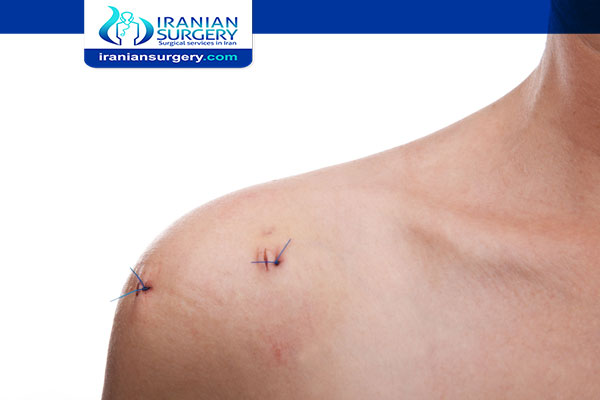Signs of Infection after Laparoscopic Surgery

How do you know if you have an infection after laparoscopic surgery?
Signs and symptoms of infection after laparoscopic surgery
Surgery that involves a cut (incision) in the skin can lead to a wound infection after surgery. Most surgical wound infections show up within the first 30 days after surgery.
. Hot incision: An infected incision may feel hot to the touch. This happens as the body sends infection-fighting blood cells to the site of infection. Proper care of your surgical incision plays a significant role in preventing infection.
. Swelling/hardening of the incision: An infected incision may begin to harden. As the tissue underneath are inflamed. The incision itself may begin to appear swollen or puffy as well.
. Redness: An incision that gets red, or has red streaks radiating from it to the surrounding skin may be infected. Some redness is normal at the incision site, but it should decrease over time, rather than becoming redder as the incision heals.
. Drainage from the incision: Foul-smelling drainage or pus may begin to appear on an infected incision. It can range in color from blood-tinged to green, white or yellow. The drainage from an infected wound may also be thick, and in rare cases, chunky.
Read more about : Vaginal Hysterectomy
Read more about : Diet after Laparotomy
. A fever higher than 101°F.
. Pain: Your pain should slowly and steadily diminish as you heal. If your pain level at the surgery site increases for no apparent reason, you may be developing an infection in the wound. It is normal for increased pain if you “overdo it” with activity or you decrease your pain medication, but a significant and unexplained increase in pain should be discussed with your surgeon.
About Iranian Surgery
Iranian surgery is an online medical tourism platform where you can find the best Surgeons in Iran. The price of a Laparoscopic surgery (Laparoscopy) in Iran can vary according to each individual’s case and will be determined based on photos and an in-person assessment with the doctor. So if you are looking for the cost of Laparoscopic surgery (Laparoscopy) in Iran, you can contact us and get free consultation from Iranian surgery.
Causes
Surgical wounds can become infected by:
. Germs that are already on your skin that spread to the surgical wound
. Germs that are inside your body or from the organ on which the surgery was performed.
. Germs that are in the environment around you such as infected surgical instruments or on the hands of the health care provider.
Risks Factor
You are more at risk for a surgical wound infection if you:
. Have poorly controlled diabetes
. Have problems with your immune system
. Are overweight or obese
. Are a smoker
. Take corticosteroids (for example, prednisone)
. Have surgery that lasts longer than 2 hours
Levels of wound infections
There are different levels of wound infections:
. Superficial - the infection is in the skin area only
. Deep - the infection goes deeper than the skin into the muscle and tissue
. Organ/space - the infection is deep and involves the organ and space where you had surgery.
Read more about : Laparoscopic Surgery
Read more about : Rest and exercise after Laparotomy

